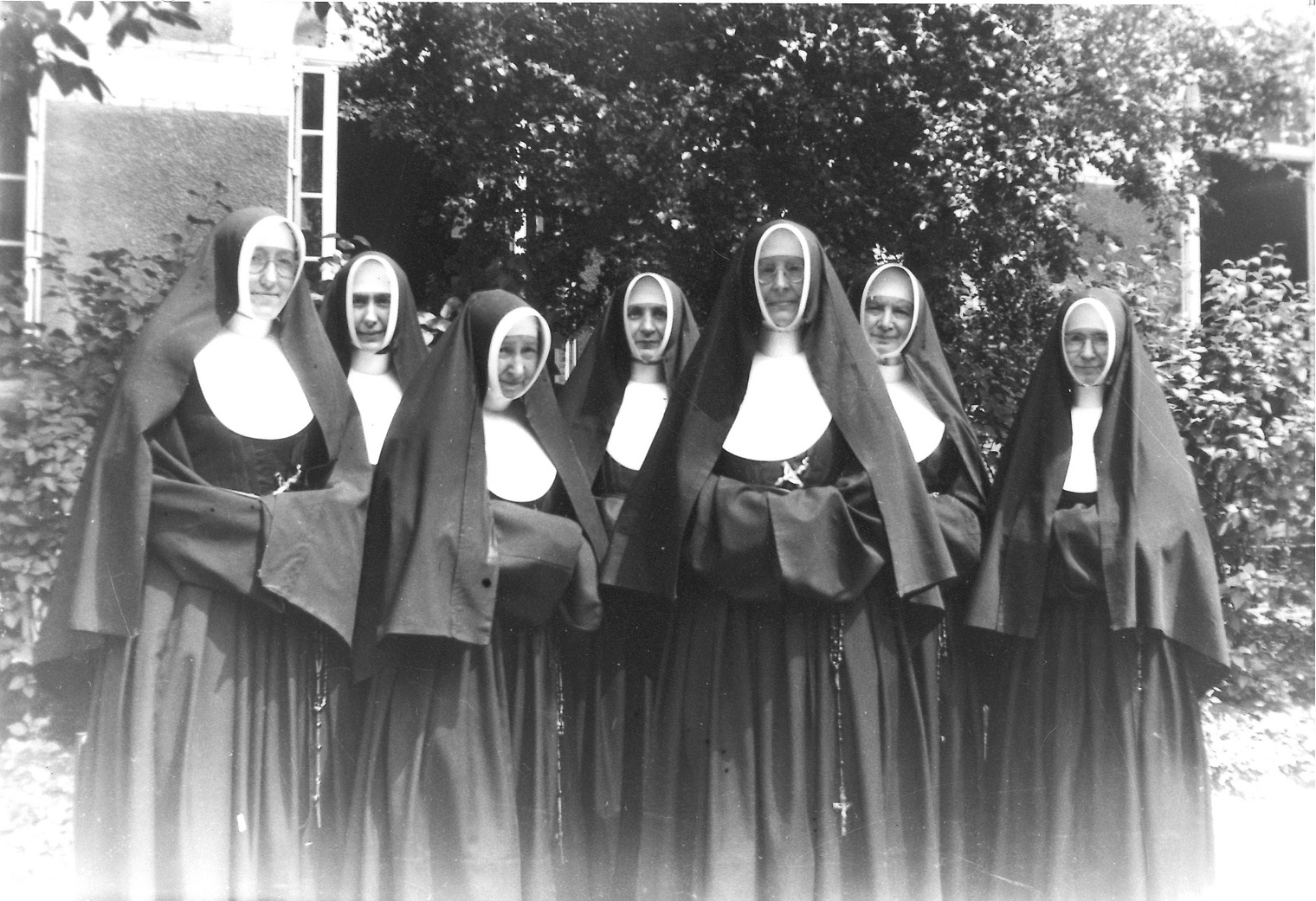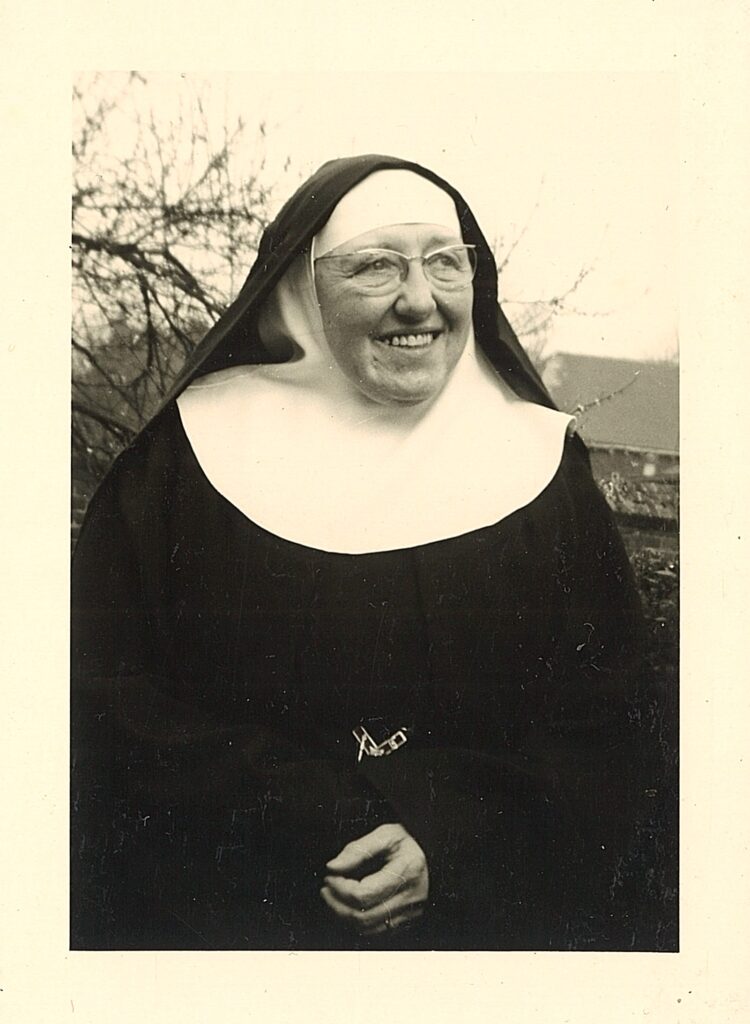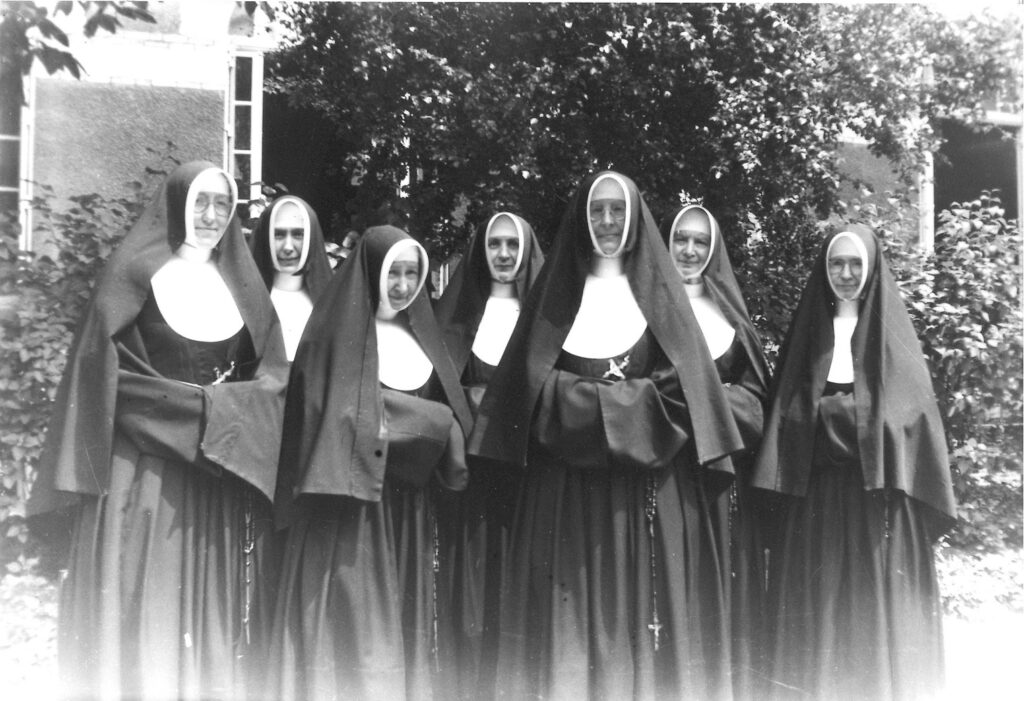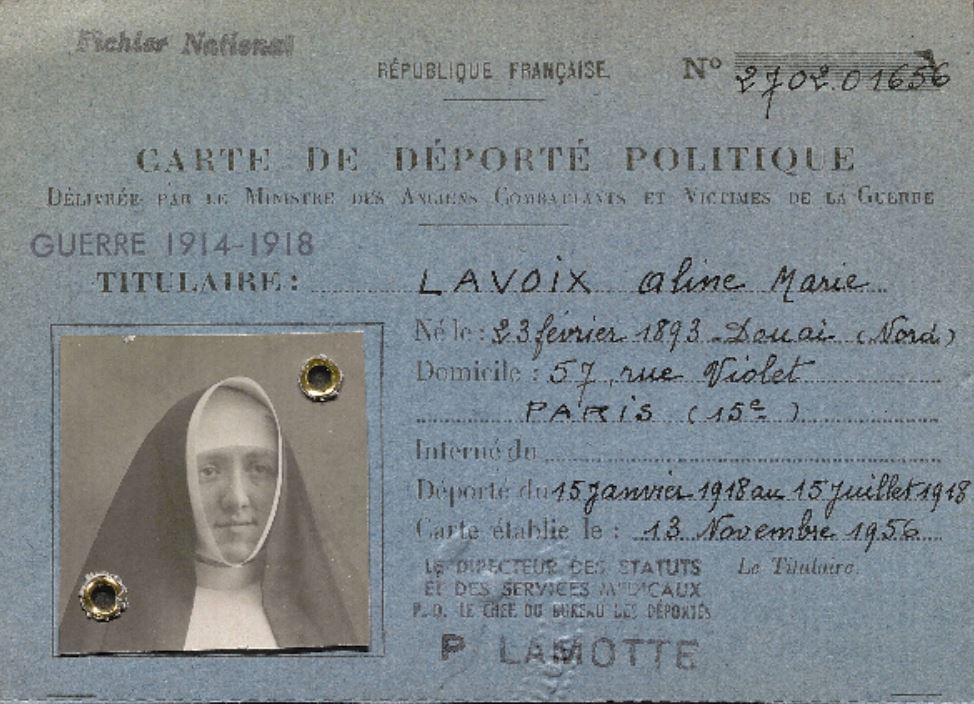The story of Aline Lavoix, Sr Saint-Philippe

Archives can be a way of discovering, or rediscovering, beautiful life stories. A new opportunity arose thanks to Mme Laure Mestre, author of a first book recounting her “Genealogy investigation” into her own family . One day, she contacted the archives of the Little Sisters of the Assumption because she was looking for information about a certain Aline Lavoix, known in the congregation as Mother Saint-Philippe.

Mrs Mestre introduced herself as the great-granddaughter of a woman who had been saved from deportation by Aline Lavoix during the First World War, in Douai. Although she knew she had passed away, she wanted to shed some light on this story and express her gratitude to the congregation.
Mother Saint-Philippe, a sister
The life of Mother Saint-Philippe, after she joined the congregation, is relatively well known: she entered the postulate stage in 1919, took her first vows two years later and her final vows in 1928. She was Novice Mistress between 1936 and 1946 before becoming assistant general for 22 years, until 1969. She spent part of the Second World War at the Mother House, where she helped welcome refugees and organise the soup kitchen during the Occupation.

In 1954 and in the years that followed, she also contributed, along with other LSAs, to setting up the Mission Ouvrière (Worker’s mission), initiated by the French episcopate.
Throughout these various missions, many sisters were marked by her “good smile”, her sense of mission, her dynamism, her loving attention, her uprightness, her “open-mindedness”, as well as her determination. The article in Pain de Chez Nous about her death in 1987 also spoke of her “demanding kindness”: the mission took precedence, but “at the same time, we felt listened to, (…), understood, called to grow, to surpass ourselves, not without suffering at times’. She was deeply convinced that prayer and mission went hand in hand.
In 1969, six months after leaving the General Council, she wrote:
« This year marked a turning point that I have tried to make consistent with my consecrated life, in which Christ must have pride of place. (…)
I felt what it was like to go from a situation of responsibility to one where you have to step aside, with the risk – if you don’t – of getting in the way of those who have the grace to guide the Congregation today. Not knowing much about what one has organised is costly, but it’s good for the soul and so natural in religious life (…)
How to love better and more, let myself be taken over by this devouring fire of charity, this intense yearning for the salvation of souls? I’m afraid of the suffering and of death. So I content myself with begging the Lord to help me fulfil his plan for m (…) »The archives also hold a number of talks and lectures that she was asked to give, particularly as part of the formation of the superiors, as well as a book dedicated to her by Sr Rose-Marie Chaine in 1999 that I recommend that you read (the text is available in the archives in French, English and Spanish, so don’t hesitate to get in touch with us!).
She died in Songeons in January 1987.What was her life like before she joined the Congregation?
What is less well known is her story before she joined the Congregation.
Aline Lavoix was born on the 23rd of February 1893 in Douai into a family of five children, where she received a Christian education in a loving family. One of the testimonies we have mentions a ‘pampered child’ and marvels that this rather spoilt childhood had no ‘deplorable effects’ on young Aline.
It seems that she felt a call to religious life from the age of 15, but her parents asked her to wait until she came of age (21 at the time) and to study nursing beforehand. So Aline joined the Red Cross in 1912, when she was 19, and gradually earned the qualifications to become a ‘Dame Nurse’.
But then war broke out, and Douai, like part of northern France, fell under German occupation. The Red Cross established a hospital, where Aline Lavoix was eventually appointed to oversee a large ward with around 40 beds. She would later testify to the deep sense of isolation the people of Douai felt from the rest of France under occupation. With the town near the front line, residents heard the daily roar of cannon fire from the ongoing battles.
The hospital was closed in October 1915, with several reasons cited, the main one being the German authorities’ preference for their own nurses. With their newfound free time, Aline and her friends dedicated themselves to teaching catechism and visiting the sick in their homes. In her testimony, she reflects, “It was there that I realised the sick needed someone to stay with them for a long time, not just to drop in.” This experience would later lead her to recognise that the LSA congregation was the path through which she could fully answer this calling.
In 1917 and again in early 1918, the Germans decided to take hostages in order to put pressure on the French government. The men were sent to Lithuania and the women to the Holzminden camp in Germany.
Oral tradition in Mme Mestre’s family, along with the testimony of Colonel Lavoix, the nephew of Mother St Philippe, suggests that Aline Lavoix and some of her friends volunteered to replace elderly or ailing women, even though they had not been officially designated. However, since neither Aline nor the friend whose testimony we have mentioned volunteering, another possibility is that they were, in fact, chosen to take the place of these women.
Nonetheless, one of the women who avoided deportation this way was Jeanne Thomas, wife of Picard and great-grandmother of Laure Mestre. Aline left for the Holzminden camp on the 10th of January 1918. The journey was extremely harsh, with deportees crammed into unheated wagons in sub-zero temperatures. Nights were particularly difficult, as sleep was nearly impossible. The trip lasted four days, with the convoy stopping during the day to pick up additional groups of deported women before resuming its journey each evening.
This camp consisted of 120 barracks and was enclosed by two-meter-high barbed wire, topped with watchtowers. Living conditions were harsh — prisoners were crammed into barracks, food was scarce, and bedbug infestations were rampant. However, they were allowed to receive parcels, and a few services had been organised, including a chapel and a school. After six months, on the 15th of July, the Germans repatriated the deportees to the free zone in France via Switzerland. Though the return journey was long, the conditions were significantly better than on the way there.

This card, which can be consulted online, is kept in the archives of the Service Historique de la Défense, Division des archives des victimes des conflits contemporains, in Caen
It was only after the war, in November 1918, that Aline was finally able to join her parents in Belgium, where they had been evacuated. She then spent a few months in northern France before moving to Paris to join the Little Sisters as a postulant. In memory of her brother, who was killed at the front on the 23rd of July 1918, she took the name Sister Mary Saint-Philippe.
Céline Hirsch, Archives Department, January 2025
